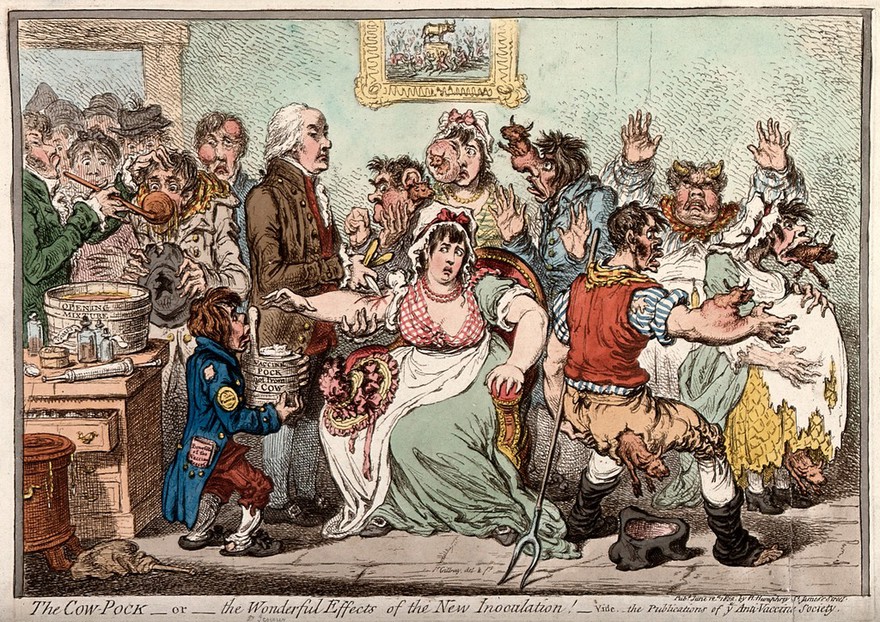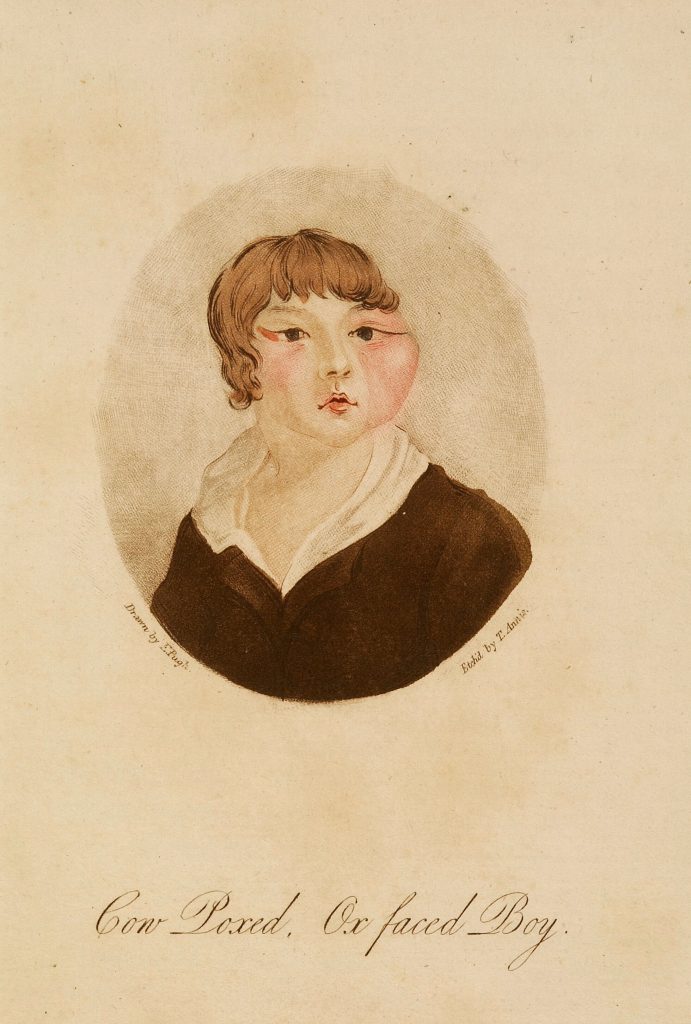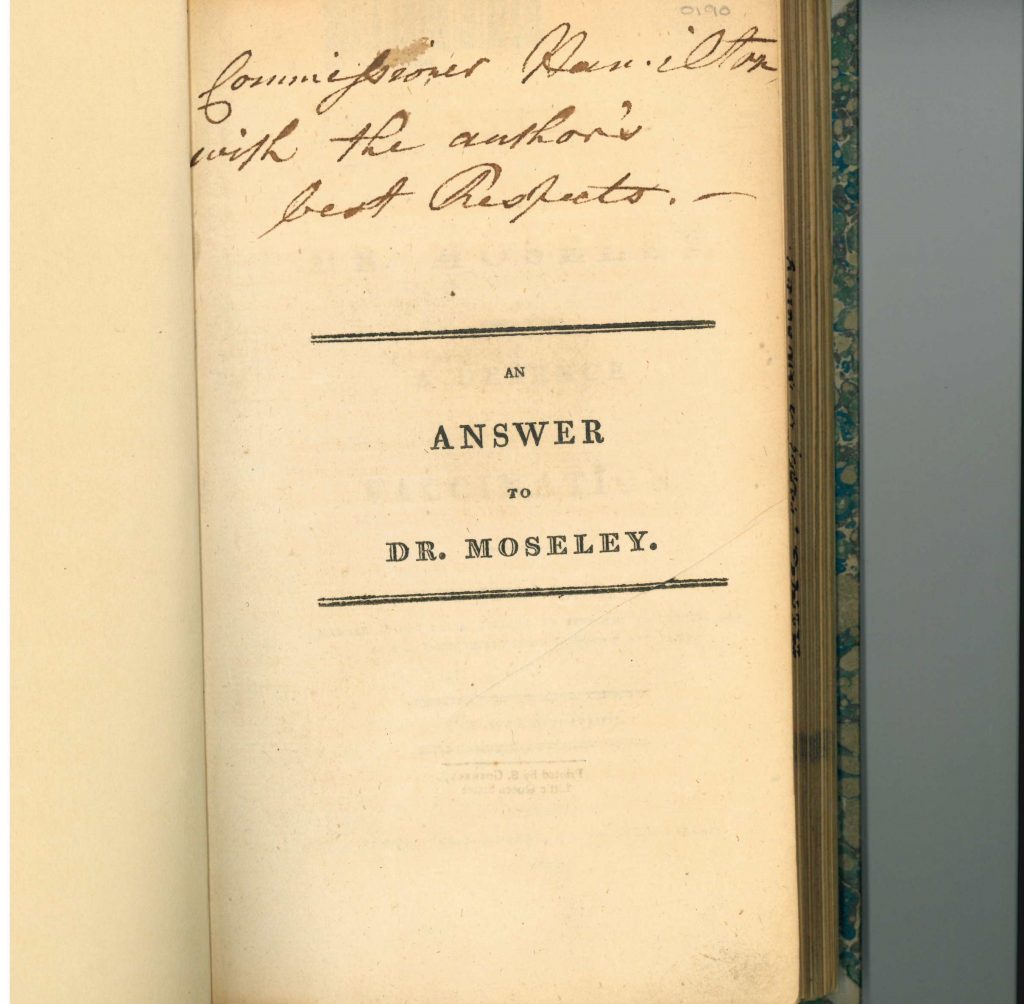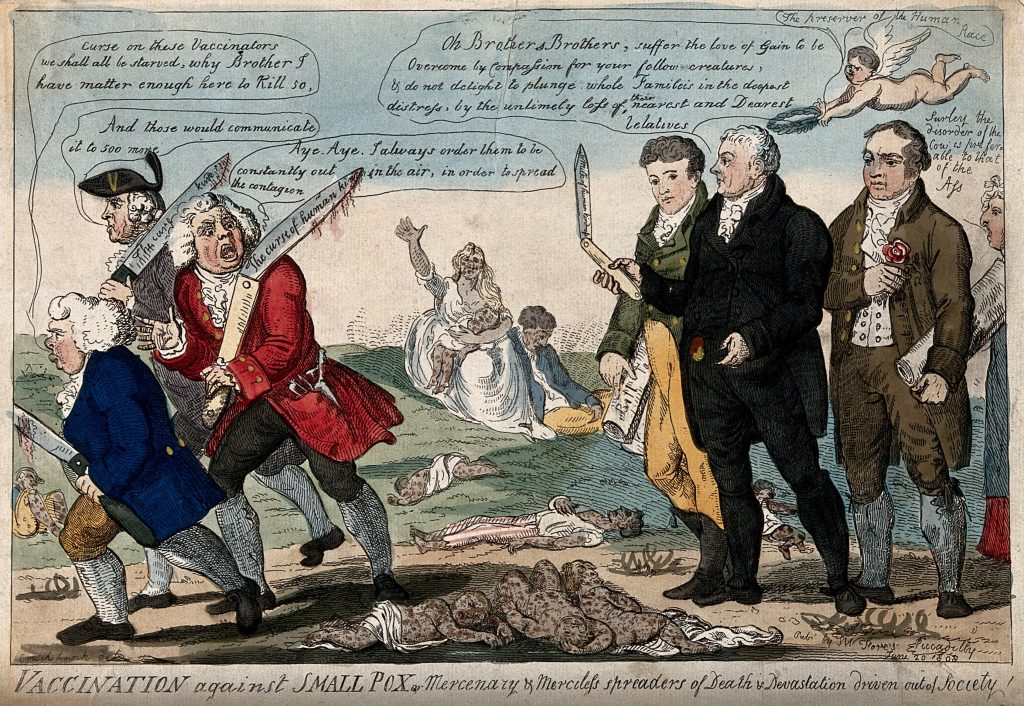In this blogpost we take a look at a couple of books found in the Reece Collection, a collection of items largely on the topics of small pox and early vaccination once owned by Richard J Reece.
In the early 19th century, the advent of vaccination sparked intense debates within the medical community and the public sphere. Two significant works encapsulate the opposing views of the time: Dr. Benjamin Moseley’s ‘Treatise on the Lues Bovilla; or cow pox’ and John Ring’s ‘An Answer to Dr. Moseley, Containing a Defence of Vaccination.’
These texts are both part of the Reece Collection, and provide insight into the debate which surrounded the new method of vaccinating against small pox which was discovered by Edward Jenner.

Treatise on the Lues Bovilla; or cow pox
Dr. Benjamin Moseley was a prominent critic of Edward Jenner’s smallpox vaccination. In his Treatise on the Lues Bovilla, Moseley articulated his concerns about the potential dangers of the vaccine. The term ‘Lues Bovilla’, translating to “bovine syphilis,” reflects Moseley’s fear that cowpox matter used in the vaccine could transmit animal diseases to humans. Moseley’s views were not mainstream, but were popular among a significant proportion of the public at the time and other critics of Jenner’s vaccination against small pox, such as Dr William Rowley. There was also this quasi-religious sentiment against vaccinations… people sprouting horns, cloven hooves and the markings of beasts (although, some would say these were metaphorical). These views were mocked and satirized at the time, as can be seen in the image below:

Credit: Edward Jenner vaccinating patients in the Smallpox and Inoculation Hospital at St. Pancras: the patients develop features of cows. Coloured etching by J. Gillray, 1802. Source: Wellcome Collection.
Moseley’s arguments were grounded in the medical understanding of the time, he was a well-respected physician, but these were also combined with speculative concerns. He questioned the safety of introducing animal-derived substances into the human body, suggesting that such practices could lead to unforeseen health issues, including diseases akin to syphilis (which is why he used the term ‘Lues Bovilla’.
However, there have also been accusations that Dr Moseley’s opposition may also have stemmed from the fact he benefited financially from variolation, an early form of inoculation which would be completely banned by the middle of the 19th century (Eisen, 2021).

An Answer to Dr. Moseley, Containing a Defence of Vaccination
In response to Moseley’s treatise, John Ring, a respected surgeon and staunch advocate of vaccination, published ‘An Answer to Dr. Moseley, Containing a Defence of Vaccination.” Ring’s work aimed to address and refute the criticisms posed by Moseley, providing a robust defence of Jenner’s vaccination method.
Ring’s defence was multi-faceted. He presented empirical evidence demonstrating the success and safety of vaccination in preventing smallpox. Ring highlighted numerous cases where vaccinated individuals were protected from the disease, countering Moseley’s claims of ineffectiveness and danger. He also tackled the misconceptions about the transmission of animal diseases, arguing that the cowpox virus was distinct and did not carry the risks Moseley feared.

Ring emphasized the scientific principles behind vaccination, explaining how the introduction of cowpox matter induced immunity to smallpox without causing serious illness. His work sought to reassure both the medical community and the public, promoting vaccination as a crucial public health measure.
The exchange between Moseley and Ring is a testament to the challenges faced by early proponents of vaccination. Moseley’s treatise fueled public fear and scepticism, necessitating detailed and evidence-based rebuttals from advocates like Ring. This debate was part of a broader struggle to establish vaccination as a legitimate and essential medical practice.
The arguments presented by Ring and other vaccination supporters prevailed. The empirical success of vaccination in controlling and eventually eradicating smallpox provided proof of its efficacy and safety. The initial resistance, exemplified by Moseley’s treatise, gradually waned as the benefits of vaccination became increasingly evident and the fact we didn’t see a rise in ox faced children, old ladies with horns and little goat children probably also helped. These works reflect the fears and hopes of an era grappling with revolutionary scientific advancements. The rigorous defence of vaccination by advocates like Ring ultimately laid the groundwork for the widespread acceptance and implementation of vaccines, marking a significant triumph in the field of public health and saving millions of lives in the process.




